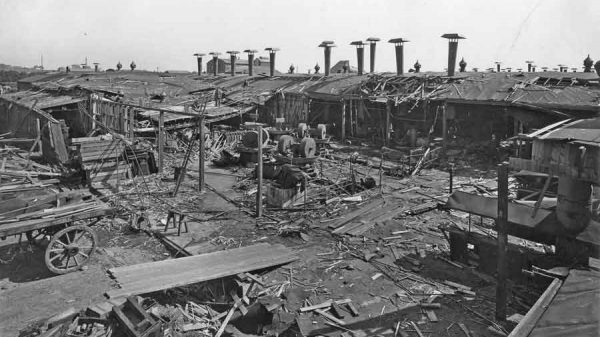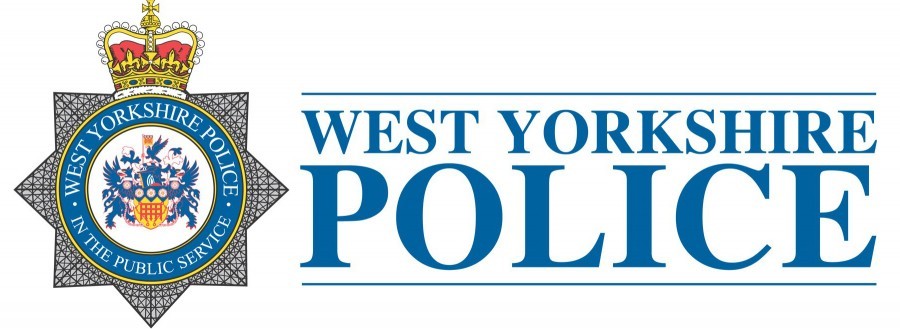As the young people in our region all return back to school, college or university this month hopefully refreshed after the summer break, education is very much taken for granted. Some children love school and for some it’s a chore but however they feel about it, they are very lucky compared to some of our forebears. Education is constantly evolving and even in the short space of time since many of our readers attended school, things have changed a lot! So as the children go skipping back into the classroom, and the parents go skipping home to celebrate the end of the holidays, we take a look at how schools and education has changed over the years.
THE BEGINNING
Although education existed in England during the Roman occupation, it disappeared when they did! So therefore we can really say that education began in this country with the arrival of St Augustine and Christianity to England in 597. He established two types of schools – grammar schools to teach Latin so that English priests were able to conduct church services, and song schools to train boys to sing in cathedral choirs. Students at the Grammar schools learnt grammar, rhetoric, logic, arithmetic, geometry, music and astronomy.
This early blossoming education system was disrupted by the arrival of the Vikings in around 866, although King Alfred of Wessex managed to educate his children in English Literature and Latin, and his influence saw England’s schools begin to develop once more.
MEDIEVAL SCHOOLS
By the turn of the 12th century, all cathedrals and collegiate churches had schools and teaching was one of their most important functions. Teaching in medieval schools was not what could be considered ‘a broad education’ generally being limited to reading, writing, Latin and chanting. However, it is important to remember that this education was seen as a huge privilege for those entering the church. The common man could not hope to be taught to read and write, so the monks and clergy men were considered to be highly educated individuals.
By the beginning of the 13th century Universities were beginning to appear too. There is evidence of teaching at Oxford as early as 1096 but it wasn’t until after 1167 that this began to develop rapidly. By 1214 magister scolarum Oxonie was given the title of Chancellor. Similarly, Cambridge had formed into an organisation by 1226. Like the very first church schools, these university colleges were copied around the country and one of the first to appear was right here in Yorkshire at Howden in 1266!
During the later medieval period, more independent schools began to open on a fee paying basis for ‘ruling class boys’. They are the essential basis of today’s public schools.
UP TO THE 19TH CENTURY
The limited curriculum finally came under question in the 16th and 17th centuries as the upper classes now wanted their sons trained for posts at Court, higher appointments in the army and for diplomacy. This time period thus saw the birth of two new types of education – apprenticeships in crafts and trades, and the chivalry system where sons were sent to be pages at great houses and trained for knighthood. Both were still only accessible to upper class boys though.
One of the most famous teachers during the late 16th century was a man who did indeed educate a woman! The woman in question was Queen Elizabeth I and her teacher Roger Ascham believed in the importance of play in education saying that the schoolhouse should be ‘the house of playe and pleasure, and not of feare and bondage.’ His complaint though was the lack of status afforded to education, saying that men would pay more for a cunning man for their horse than a cunning man for their children!
The end of the 17th century saw the introduction of Charity Schools. These were seen as a mixed blessing and there were many who didn’t approve of educating the masses at all believing that education ‘would simply make the working poor discontented with their lot.’
The arrival of the Industrial Revolution towards the end of the 18th century led to Peel’s Factory Act of 1802 which required employers to provide instruction in reading, writing and arithmetic for the first four years of an apprenticeship.
19TH CENTURY
The 19th century saw the introduction of even more schools.
Schools of Industry provided the poor with manual and elementary instruction. Girls were taught at these schools separately to the boys. All the children were taught reading, writing, geography and religion with the girls learning knitting, sewing, spinning and housework. The boys concentrated on shoemaking and preparing machinery for carding wool.
Monitorial schools were another new idea. These were based on the Bible and involved the use of monitors, along with repetitive exercises. This meant that masters could teach hundreds of children all at the same time. Monitorial schools studied the three ‘Rs’ plus cobbling, tailoring and gardening for boys, knitting, lace-making and baking for the girls.
The first infant school was established in Scotland in 1816. From the age of 2 children could attend as a type of babysitting service while parents worked in the local mill. They were taught anything considered to be useful that they might understand at such a young age, and also took part in singing, dancing and playing. London followed suit in 1818.
All of the above schools took boys and girls but they were segregated. Taught separately and different subjects ‘more fitting’ to their sex. The schools were set up by people who believed in educating the masses but this was still controversial and often met with disapproval. Tory MP Davies Giddy at the time warned the House of Commons “However specious in theory the project might be of giving education to the labouring classes of the poor, it would, in effect, be found to be prejudicial to their morals and happiness; it would teach them to despise their lot in life instead of making them good servants in agriculture and other laborious employs…”.
A typical classroom in the 19th century consisted of rows of wooden desks. There would often be maps and pictures on the walls, a globe for geography lessons and an abacus for sums.
Children wrote on slates with chalk, which to be cleaned, had to be spat upon and rubbed with a sleeve or finger! For those who were lucky enough to move onto paper, they had a metal nib pen which would be dipped into an inkwell.
20TH CENTURY
By the dawn of the 20th century, education in England was lagging behind the rest of Europe and the USA in the quality of teaching for the masses. Europe and the US were delivering curriculums with a broad range of sciences and engineering – important in the development of industry, but England was still delivering a more ‘classical’ curriculum favoured by gentlemen. The government realised that they needed to change things in order to maintain its position in world trade, so in 1902 the Education Act was passed creating the Local Education Authorities that we still have today.
In 1906 and 1914 acts were passed that enabled LEA’s to provide meals for undernourished children. One of the first LEA’s to take advantage of this was the City of Bradford. Medical Superintendent Ralph H Crowley reported in an Education Committee Report at the time on a ‘course of meals given to Necessitous Children between April and July 1907’ saying “The meals, consisting of breakfast and dinner were given in a school in one of the poorest quarters of the city, about 30 of the children coming from this school and 10 from an adjacent one. The children were selected by the head teacher and myself.” This was the beginnings of school dinners.
Between the two World Wars, the age you could leave school was changed from 12 to 14, and attendance was more rigorously enforced.
One of our regular readers, Kevant Coates remembers going to school during WW2 saying “I attended infant school at Kippax. It was a big building as it housed the juniors too. I remember it always being painted with bright glossy paint and it was always very clean smelling.
We were all given a daily spoonful of codliver oil that was mixed with malt, it was in a very big jar, so tall that the spoon had a very big handle to reach the bottom. Miss Lillyman was in charge of the infants and she was glamorous, wearing lots of bangles. She was a very creative lady and could make fantastic models out of plasticine. Boys and girls were taught together and I used to run home every day for my lunch. At the age of 11 I went to Castleford Modern which was a boy’s school and very strict. I recall Mr Binks the art teacher who would rap you on the knuckles with a cane if he caught you looking over at the girl’s school out of the window when they were outside doing games! I left school at 15 as they had just increased the age from 14 and I missed out by about 6 months. Pupils left at two different times of the year back then depending on when your birthday fell.”
The 1944 Education Act changed things again. Education was split into the three parts that we recognise today of primary, secondary and further. School attendance was compulsory between the ages of 5 and 15 with the hopes it would be raised to 16. LEA’s now had to provide milk and meals for all pupils in attendance. The act in essence, established a nationwide system of free, compulsory schooling.
During the 40’s, 50’s and early 60’s the 11 plus exams existed. Intended to be a selection process as to whether children attended grammar school or secondary modern, based on intelligence, the tests were highly damaging to the self-esteem of youngsters at the time. It was seen as you either ‘passed’ and went to grammar school where you had a good chance of going onto university and a successful future, or you ‘failed’ and attended secondary modern. People were of course very unhappy with this system and from around 1965 comprehensive schools started to appear in more abundance, having been an experimental system since the end of the war. They led to the phasing out of 11 plus exams as ‘comps’ were not selective.
One member of our team who was at school during this time was our Editor, Lesley Ann. She recalls “When I left junior school, my year was the very first to attend the brand new John Smeaton Comprehensive as it was called back then. I believe it was one of the first ‘comps’ to open. Everything was modern and brand new, state of the art labs, modern kitchens for cooking lessons, sports tracks and even a swimming pool. As we all lined up outside on our very first day there was a film crew filming us. I remember a Miss Townsend who was very strict. You got called to her if you were caught running in the corridor or wearing the wrong uniform. In 1971 Decimalisation came in, everything went metric, which meant new text books, rulers and new teachings.
Calculators were just coming onto the market and maths suddenly became easier, I remember a lot of discussion at the time about whether they should be allowed in school especially for exams. To help with my school work, I was very fortunate my parents bought a full set of Encyclopædia Britannica, this really helped with homework, today of course there is the world of the internet!”
Since the 1970’s education continued to evolve and changes have constantly been made as new governments put their own stamp on things. In the 1980’s governing bodies were introduced for every school and in 1987 corporate punishment was abolished in maintained schools. In 1988 the National Curriculum was born which stated that the three core subjects of maths, English and science would be taught plus six foundation subjects plus a modern foreign language. It also set out attainment targets for each key stage.
THE NEW MILLENNIUM
The introduction of Academy schools in recent years has been controversial. Originally established by the government in 2000 their aim was ‘to improve pupil performance and break the cycle of low expectations.’ Since 2010 all maintained schools are enabled to convert to academy status if they wish. They are essentially state funded schools funded by the Department for Education but independent of local authority control. They do not have to follow the National Curriculum but do have to cover maths, English and ensure that their curriculum is broad and balanced. Criticism of academy schools has been high with many saying they are a waste of money and a move towards privatisation of education ‘by the back door.’ There are also concerns that they may lead to selection again which as a country we worked hard to move away from.
Education in recent times has made full use of the swift progress of technology. Gone are the old blackboards and chalk, replaced instead with state of the art smart boards which are connected to computers and the internet enabling teachers to deliver a more interactive way of learning. Many schools also make good use of laptops and tablets allowing students to access the vast knowledge that is the World Wide Web. In today’s global market it is vital for youngsters to grow up with technology and its ever changing face.
Whatever you thought of school when you went, one thing is certain – things continue to change in education. Importantly though, school remains compulsory for the children of Britain and whether they like it or not that is definitely a good thing!






